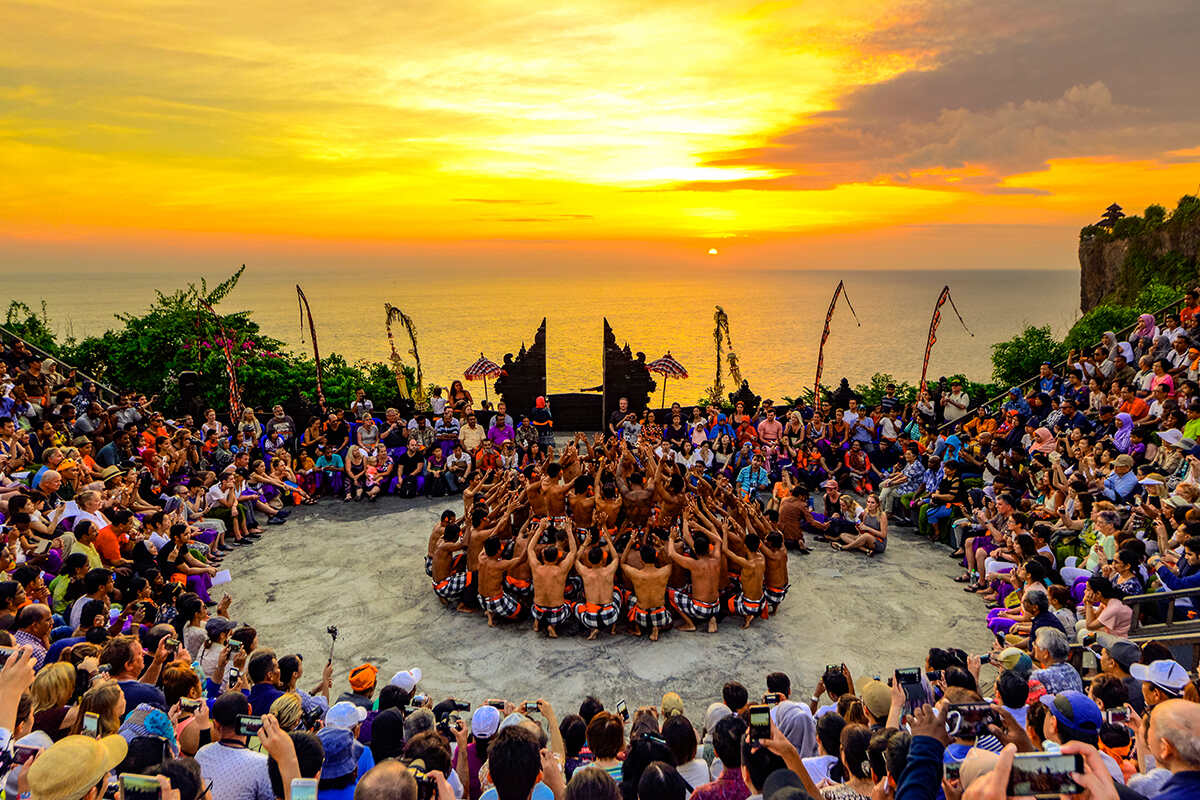Silver lining amid commotion
In a world deeply divided on sectarian lines, open-air performance of Ramayana in the form of Kecak dance in Indonesia’s Bali stands out as a symbol of communal harmony and undivided spirituality

A tweet by BJP's Nupur Sharma, asking Muslims to keep away from garba, is doing rounds on social media. Some time ago, Bollywood actor Nawazuddin Siddiqui pulled out of a Ramleela programme after Shiv Sena objected to his presence on the stage.
These hatemongers may not know that the Muslim-majority Indonesia, despite the rise of Islamic fundamentalism, has not allowed fanatics to pollute the cultural aspects of Hinduism, which they are proud of.
Unlike India, in Bali, Ramayana is performed daily and what makes it unique is that the entire story is narrated through sounds!
So, when I landed in Bali, the first thing I asked my local guide Komang — a Balinese Hindu — was where the Ramayana is performed through sounds? Komang informed me that it was performed at Uluwatu temple in Jimbaran area which was about 30-minutes' drive from my hotel in Kuta.
However, he warned me, "make sure you reach there early to get a good seat which can give a better view of the event."
Uluwatu temple has a spectacular setting. Perched on a steep cliff with the Java Strait forming its backdrop, Uluwatu temple is a huge complex. As one entered the temple, the monkeys prancing around reminded me of Jaipur's Galta. After buying the ticket for the show, as I entered the circular open-air stage (arena style theatre), the sun was on the last leg of its journey. In the centre, wood logs were being stacked up by bare-chested men wearing checked cloth around their waists, who were murmuring something. The fire was lit and as the sun dipped into the Java Strait, the flame increased and the entire area was lit up and the sound "cak, cak, cak" grew louder. The performance began with a puja carried out by a priest dressed in white clothes. And then, slowly, the characters from Ramayana started appearing. Tourists are provided with a pamphlet about the story but, being an Indian, I could easily recognise who's who of the Ramayana.
The moot question is, where did the onomatopoeic chant of "cak, cak, cak" come from? It is believed that it's derived from "Kecak" — a Balinese trance ritual or dance — which is accompanied by male chorus. It's also called the Monkey Dance. However, its present form is attributed to Walter Spies, a German painter and musician. Walter, who has been credited with popularising the Balinese art and culture in the West, adapted it as a drama, based on the Ramayana to attract Western tourists.
The best part of the Kecak Dance is that it's performed in a natural environment or surroundings with no props or any artificial backdrop. Unlike the conventional dance drama, there is no orchestra or band of musicians. It's just "cak, cak, cak" chanted by 100 to 150 bare-chested men in chorus, which narrates the story through the movement of their arms and hands. However, the "cak, cak, cak" sound can vary depending on the scene or the situation. Like when Lord Rama and Devi Sita are seen in a garden, the sound becomes a little soft. But when the wicked and scheming Ravana is eyeing Devi Sita in a lonely place, the sound of "cak, cak, cak" tells you what is going to happen. All hell breaks loose when Lord Hanuman's vanara sena attacks Ravana's Lanka. The entire area reverberates with "cak, cak, cak" as Lord Hanuman goes on destroying Ravana and his Lanka. The fire which was lit up in the centre in the beginning comes in handy for showing the symbolic burning of Lanka. Lord Hanuman kicks the burning logs, and the flames engulf the entire area. Sometimes, the embers even land on the audience, creating commotion in the stands amid loud screams.
The drama comes to an end when Ravana is killed by Lord Rama, and the entire cast, like in any other theatrical performance, comes for the final bow and mingles with the audience. Most sought-after character for selfies is Lord Hanuman.
A little hefty and tall man, who essays the role of Lord Hanuman, draws the loudest applause from the audience because of his antics that provide a comic relief of sorts to the drama.
The audience bursts into laughter the way he fights with Ravana sena. While trying to dodge or deceive Ravana sena, he sometimes runs into the audience's stand to hide himself. Sometimes, he teases Ravana sena to catch him and then runs from one corner to another.
Although none from the cast could speak English, through a local interpreter, one came to know that almost the entire cast of the dance drama is composed of amateurs. Most of them are government servants and half of the proceeds of the show go to the artists, and the remaining to the temple for its upkeep.
To a tourist, Kecak dance may look like any ballet performance with a difference, where rhythmic vocal chants not only narrate the tale but also serve as an accompanying orchestra. But there is more to Kecak dance than just a performance. It depicts Bali's pristine spiritual culture, which is still intact despite the influx of tourists. It's an act of worship and an expression of cultural values, reflecting the essential Balinese philosophy.
One thought that Bali, being one of the most sought-after tourist destinations, will be full of those "clichéd and tacky touristy" fake heritage sites but what one discovered was refreshing old Hindu culture which all of us have read about in our textbooks. And it exists in complete harmony with the spiritual and social life of the only Hindu majority province of world's largest Muslim country Indonesia.
The writer has worked on senior editorial positions for many renowned international publications. Views expressed are personal



